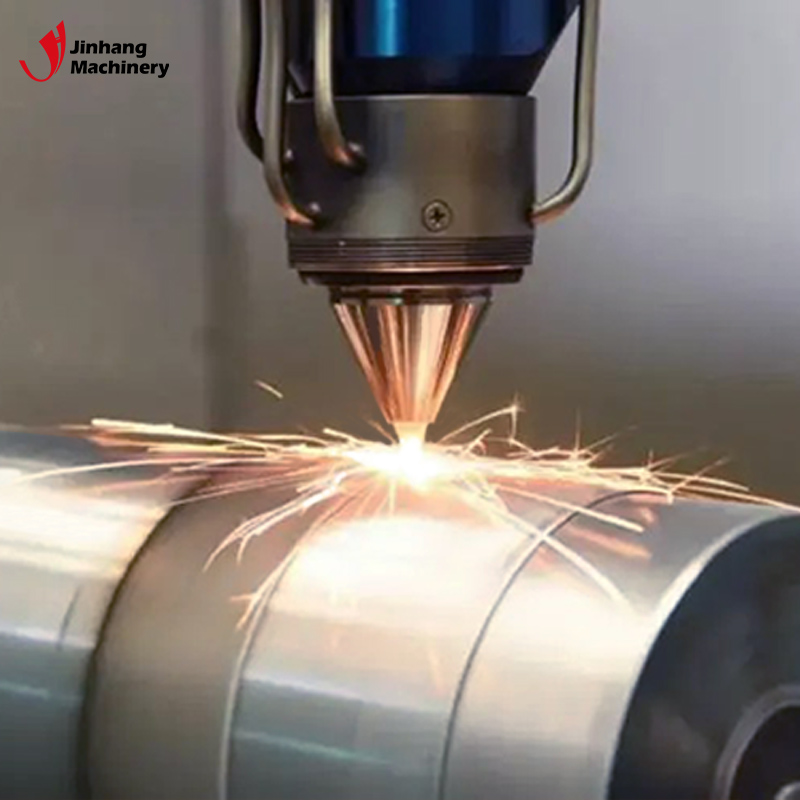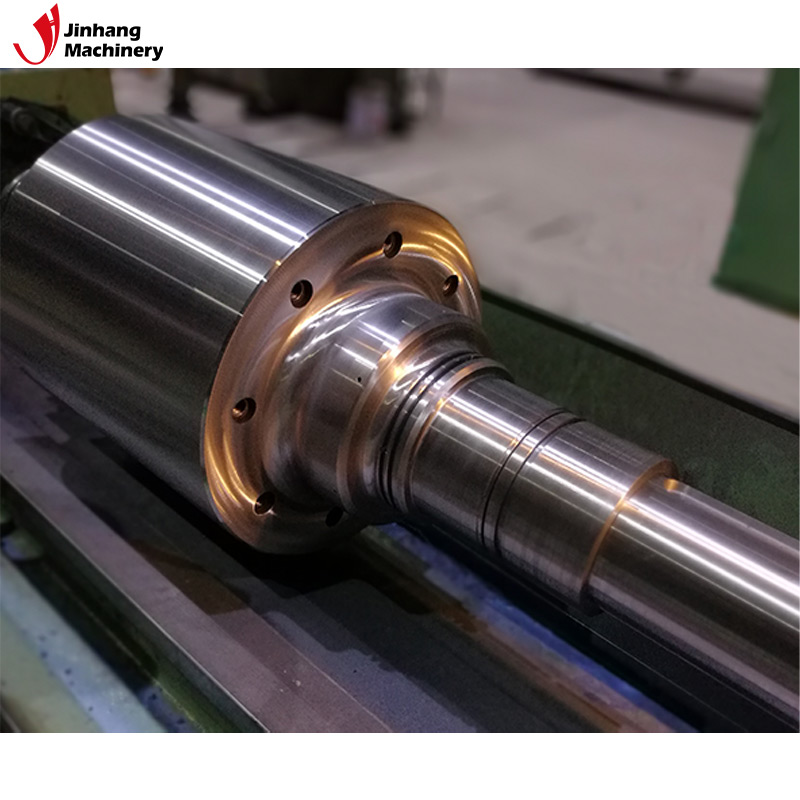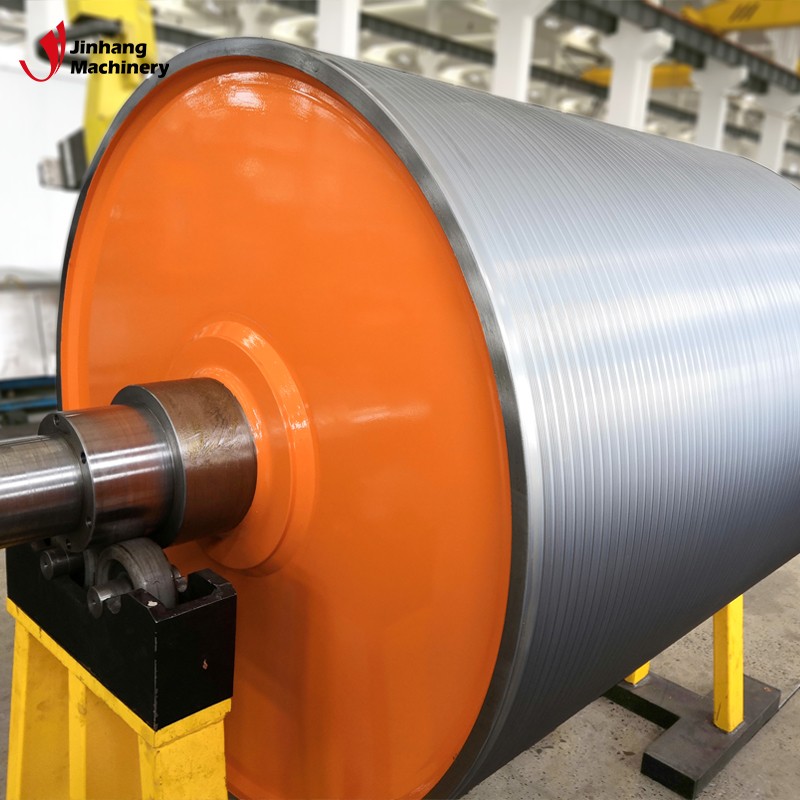What is the process sequence of chrome-plated rollers?
Chrome-plated rollers are a type of roller equipment widely used in various industrial processing and manufacturing fields. Its core feature is that the surface is covered with a uniform chrome coating. This chrome coating provides the roller with excellent corrosion resistance, wear resistance and smoothness, enabling it to operate stably and for a long time in various harsh industrial environments. However, the excellent performance of chrome rollers is not achieved overnight, but relies on a set of precise and complex process flows. Each process must be strictly controlled to ensure the quality and performance of the final product.
This article will analyze the process sequence of chrome-plated rollers in detail. From the preparation of raw materials to the final quality inspection, each step will be introduced in detail to help readers better understand the manufacturing process of this core industrial component.

What is the process sequence of chrome-plated rollers?
The process sequence of chrome-plated rollers:
Raw material preparation
Roller body processing
1. Rough processing
2. Finishing
3. Heat treatment
Pretreatment
1. Cleaning
2. Pickling
3. Activation
Electroplating process
1. Electroplating equipment preparation
2. Chrome plating solution preparation
3. Electroplating process control
4. Post-plating treatment
Post-processing and quality inspection
1. Plating polishing
2. Plating detection
3. Balance correction
Packaging and transportation

Raw material preparation
The manufacture of chrome-plated rollers starts with the selection and preparation of raw materials. Usually, the material of the roller body is high-quality steel, such as carbon steel or alloy steel. Selecting high-quality steel is the basis for ensuring the strength and durability of the roller body. The selection of raw materials mainly considers the following aspects:
1. Chemical composition of steel: The content of carbon, silicon, manganese, phosphorus, sulfur and other elements in steel directly affects the hardness and wear resistance of the roller body.
2. Physical properties of steel: such as tensile strength, yield strength and ductility, which determine whether the roller body can withstand huge mechanical stress during use.
3. Processing properties of steel: including machinability, weldability, etc., to ensure that the steel can reach the required shape and size in subsequent processing.
The raw material preparation stage also includes surface cleaning of steel, removal of oxide scale, oil stains and other impurities to ensure the smooth progress of subsequent processing.
Roller body processing
Roller body processing is a key step in the manufacturing process of chrome-plated rollers. This stage mainly includes the following processes:
Rough processing
Rough processing is the process of roughly processing the raw materials into the required roller body shape and size. Through turning, milling, drilling and other processes, the excess part of the raw material is removed to gradually approach the design size. The surface of the roller body after rough machining is usually rough, but this provides a basis for subsequent fine machining.
Fine machining
Fine machining is to further correct the size and improve the surface finish on the basis of rough machining. Fine machining usually adopts high-precision turning and grinding processes to ensure that the dimensional accuracy of the roller body meets the design requirements and the surface finish reaches a high standard. After fine machining, the surface of the roller body is very smooth, which is ready for the subsequent electroplating process.
Heat treatment
In order to improve the hardness and wear resistance of the roller body, the roller body is usually heat treated after fine machining. Heat treatment includes quenching, tempering and other processes, which can significantly improve the strength and hardness of steel and improve its mechanical properties. The roller body after heat treatment needs to be corrected in size to eliminate the deformation that may occur during the heat treatment process.

Pretreatment
Before the formal chrome plating process, the roller body needs to undergo a series of pretreatment processes to ensure that the chrome plating can be firmly attached to the surface of the roller body. This stage includes the following steps:
Cleaning
The surface of the roller body must be thoroughly cleaned to remove grease, dirt and other contaminants. Cleaning is usually divided into two methods: chemical cleaning and mechanical cleaning. Chemical cleaning uses chemical reagents such as solvents, acids or alkalis to remove surface contaminants, while mechanical cleaning removes surface impurities by brushing, sandblasting, etc.
Pickling
The cleaned roller body usually needs to be pickled to remove the oxide scale and tiny particles on the surface. Hydrochloric acid or sulfuric acid solution is often used for pickling. After treatment, the surface of the roller body becomes more activated, which is conducive to the adhesion of the coating.
Activation
After pickling, in order to further improve the adhesion of the coating, the roller body is usually activated. The activation treatment is to treat the surface of the roller body with an activator to form an extremely thin oxide film on the surface, which enhances the bonding force of the chrome plating layer.
Electroplating process
Electroplating is the most critical process in the manufacture of chrome-plated rollers. The process involves the control of electrochemical reactions and the precise ratio of the plating solution components. The electroplating process usually includes the following steps:
Preparation of electroplating equipment
The electroplating process needs to be carried out in dedicated electroplating equipment, including electroplating tanks, DC power supplies, cathodes and anodes. During the chrome plating process, the roller body acts as the cathode, the chromic acid solution acts as the electrolyte, and the chrome layer is deposited on the roller surface through an electrochemical reaction.
Preparation of chrome plating solution
The preparation of chrome plating solution is a crucial part of the electroplating process. Typical chrome plating solution components include chromic anhydride, sulfuric acid and other additives. The concentration, temperature and pH value of the chrome plating solution must be strictly controlled to ensure the uniformity and quality of the coating.
Electroplating process control
During the electroplating process, the roller body deposits a chromium layer through direct current in the electrolyte. Current density, temperature and time are key factors affecting the thickness and quality of the coating. Too high or too low current density will lead to uneven coating, while the control of temperature and time directly affects the hardness and finish of the coating. The entire electroplating process usually takes several hours or even days to ensure that the coating reaches the required thickness.
Post-plating treatment
After the electroplating is completed, the roller body needs to be post-plated, including rinsing, passivation and drying. Rinsing is to remove the plating solution residue on the surface of the roller body, usually with clean water or deionized water. Passivation can increase the corrosion resistance of the coating, while drying is to prevent oxidation caused by residual moisture on the surface of the roller.
Post-treatment and quality inspection
After the electroplating process, the chrome-plated roller usually needs to be post-processed and inspected to ensure that the product meets the quality standards.
Plating polishing
Although the surface of the electroplated roller has a certain glossiness, it is usually polished to achieve a higher finish and flatness. The polishing process uses abrasives and polishing agents to finely grind the surface of the coating to achieve a mirror effect.
Plating inspection
Plating inspection is a key step to ensure the quality of chrome rollers. Inspection items include coating thickness, hardness, adhesion, surface finish, etc. Thickness inspection is usually carried out using a thickness gauge, hardness inspection using a microhardness tester, and adhesion inspection is evaluated by cross-cutting test or peeling test.
Balance correction
In some applications, the roller body also needs to be balanced to ensure that it does not vibrate when rotating at high speed. This process is usually carried out using a dynamic balancing machine, which adjusts the mass distribution of the roller body to achieve a balanced state.
Packaging and transportation
After all the processes, the chrome-plated roller finally enters the packaging and transportation stage. The packaging process requires adequate protection of the roller body, usually using anti-rust paper, plastic film and wooden box packaging to prevent corrosion, scratches and collisions during transportation.

Summary
The manufacturing process of chrome rollers is a complex and sophisticated technical project involving multiple links and processes. Each process is critical and must be subject to strict quality control and precise operation to ensure the quality and performance of the final product. From raw material preparation, roller body processing, pre-treatment, electroplating process, to post-treatment and quality inspection, each step is laying the foundation for the final high-quality chrome-plated roller.
Correctly understanding the process sequence of chrome rollers not only helps to improve the production efficiency and quality of the products, but also gives full play to the performance advantages of chrome-plated rollers during use. By strictly following these process flows, manufacturers are able to produce chrome-plated rollers with superior performance and long service life to meet the needs of different industries and applications.
